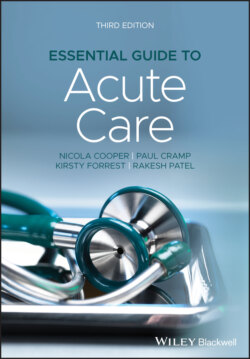Читать книгу Essential Guide to Acute Care - Nicola Cooper - Страница 10
ОглавлениеIntroduction
…in the beginning of the malady it is easy to cure but difficult to detect, but in the course of time, not having been either detected or treated … it becomes easy to detect but difficult to cure.
— Niccolo Machiavelli, The Prince
It’s almost 15 years since the publication of the second edition of Essential Guide to Acute Care and a few more since one of the authors (NC) asked her boss at the time (PC) and a friend (KF) to help her write a book on ‘everything you need to know but no‐one told you’ about the care of acutely ill adults. In that time, it has been a best‐selling book used by doctors in training, critical care outreach teams, nurses and allied health professionals working in acute areas, medical students, and clinical teachers. Many things have changed since the second edition: new oxygen guidelines, updated practices in fluid balance and volume resuscitation, new definitions of sepsis, and ‘acute kidney injury’ instead of ‘renal failure’ among others. This edition has been extensively rewritten and updated, including a new author (RP), but we have done our best to retain the informal, easy‐to‐read style that made this book so popular with readers.
There are many books on the management of patients who are acutely ill, but all have a traditional ‘recipe’ format. Readers look up a diagnosis and the management is summarised. Few of us are trained how to deal with the generic altered physiology that accompanies acute illness. The result is that many doctors are unable to deal logically with patients in physiological decline and this often leads to suboptimal care.
In surveys of junior doctors of all specialties, few can explain how different oxygen masks work, the different reasons why PaCO2 rises, what a fluid challenge is, and how to effectively treat organ failure. This book contains information you really need to know but is not found in standard textbooks. Throughout the text are ‘mini‐tutorials’ that explain latest thinking or controversies. Self‐assessment case histories and references are included at the end of each chapter. We have dropped the Appendix on practical procedures in this edition and instead recommend the NEJM videos in clinical medicine.* It is our aim that this book will provide a foundation for learning how to care effectively for acutely ill adults. We hope you enjoy using it, we have certainly learned and enjoyed the process of rewriting it!
Nicola Cooper, Paul Cramp, Kirsty Forrest, and Rakesh Patel
January 2020
Note
1 * www.nejm.org/multimedia/medicalvideos
